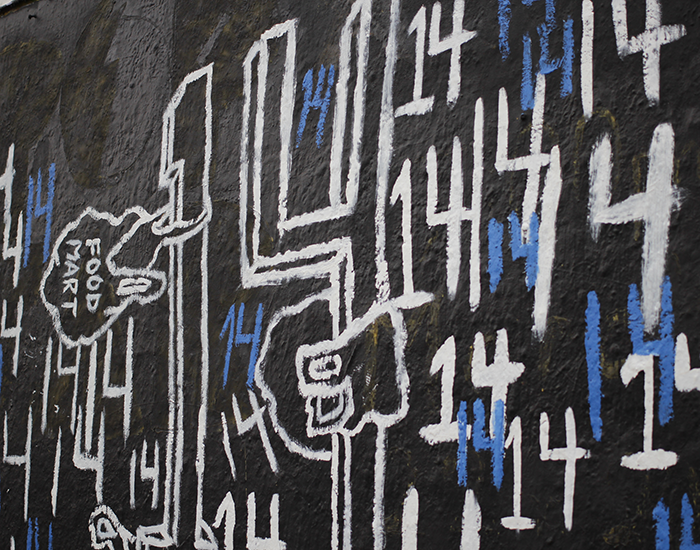Fourteens raise awareness, blanket campus
Many who have walked around campus over the past week have likely noticed many etchings of the number 14 chalked on what seems like every available surface. Suddenly emerging around last Wednesday, these 14s have sparked conversation throughout the campus community. They have some thinking they are for the class of 2014, and others thinking they are nothing more than a harmless prank.
But this phenomenon is not a hoax. The Student Sustainability Council (SSC) decorated campus after one of their weekly meetings as part of an awareness campaign, sending 10 of their members to canvas the campus with chalk.
“We wanted to get people to talk about them,” said SSC chair Abby Dwornik. With a chuckle, she added, “I think we were pretty successful there.”
After a few days of leaving passing observers in suspense over the meaning of the odd numbers covering the sidewalks, SSC revealed the meaning of the 14s and their significance.
“14 is actually the average number of minutes that a plastic bag is used,” said SSC vice chair Steven Cramer.
While plastic bags are only in use for an average of 14 minutes, they can last anywhere from 200 to several thousand years in landfills, taking a significant toll on the environment. As only 7 percent of 102 billion plastic bags produced in the United States are recycled, a significant amount of plastic bags are languishing in landfills. Unfortunately, the bags will continue to do so long after anyone living today is dead.
“We wanted people to think about the environment and change their behaviors with plastic bags,” said Cramer, “Simple things like bringing your own bag to GrabIt or recycling bags you get from grocery stores help a lot in the long run.”
“We definitely got a lot of people talking,” added Dwornik. “People who knew the truth liked it. This was one of our most successful events yet, and we’re open to doing this kind of thing in the future.”


